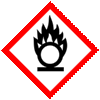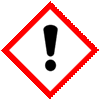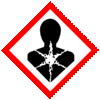| Anmol Chemicals is the pioneer manufacturers of Ammonium Persulfate, Pharmaceutical Excipients Chemicals in India. We offer Halal and Kosher Ammonium Persulfate made in an ISO9001, ISO22000 (FSSC22000) and cGMP certified facility. Our group has several manufacturing facilities spread across the world, supported by toll manufacturers and representatives in UAE, Europe, Africa, USA, China and has several associated manufacturing facilities spread across India. All the Information on Physics, Chemistry, Applications, Uses and Technology on Manufacture of Ammonium Persulphate is in these pages. |
| The units have one or more of the certifications like FDA GMP, ISO 9001, ISO 22000, HACCP, REACH, Kosher & Halal |
Ammonium Persulfate Persulphate SDS GHS, MSDS Sheet
Specifications of Ammonium Persulfate
Ammonium Persulfate SDS Sheet Safety Data Sheet
1. Product & Company Identification
Synonyms: Ammonium Peroxydisulfate; Peroxydisulfuric Acid, Diammonium Salt; Diammonium peroxydisulfate
CAS No.: 7727-54-0
Molecular Weight: 228.20
Chemical Formula: (NH4)2S2O8
Relevant Uses: Oxidizer for Oil & Gas Wells
2. Hazards Identification
GHS, Globally Harmonized System Classification in accordance with 29 CFR 1910
Classification according to Regulation (EC) No 1272/2008
Acute toxicity - Oral Category 4
Skin corrosion/irritation Category 2
Serious eye damage/eye irritation Category 2A
Respiratory sensitization Category 1
Skin sensitization Category 1
Specific target organ toxicity (single exposure) Category 3
Oxidizing Solids Category 3
Labeling according Regulation (EC) No 1272/2008
GHS Label Elements  Oxidizing Solid |
GHS Label Elements |
GHS Label Elements |
Signal Word: Danger
Hazard Statements:
H272 - May intensify fire; oxidizer
H302 - Harmful if swallowed
H315 - Causes skin irritation
H317 - May cause an allergic skin reaction
H319 - Causes serious eye irritation
H334 - May cause allergy or asthma symptoms or breathing difficulties if inhaled
H335 - May cause respiratory irritation
Precautionary Statements - Prevention
P210: Keep away from heat/sparks/open flames/hot surfaces. - No smoking.
P220: Keep/Store away from clothing/combustible materials
P221: Take any precaution to avoid mixing with combustibles
P261: Avoid breathing dust.
P264: Wash face, hands and any exposed skin thoroughly after handling
P270: Do not eat, drink or smoke when using this product
P271: Use only outdoors or in a well-ventilated area
P272: Contaminated work clothing should not be allowed out of the workplace.
P280: Wear protective gloves/ protective clothing/ eye protection/ face protection
P285: In case of inadequate ventilation wear respiratory protection
Precautionary Statements - Response
P301 + P312: IF SWALLOWED: Call a POISON CENTER or doctor if you feel unwell.
P302 + P352: IF ON SKIN: Wash with plenty of water.
P304 + P341: IF INHALED: If breathing is difficult, remove to fresh air and keep at rest in a position comfortable for breathing.
P305 + P351 + P338: IF IN EYES: Rinse cautiously with water for several minutes. Remove contact lenses, if present and easy to do. Continue rinsing.
P314: Get Medical advice/attention if you feel unwell.
P330: If swallowed, rinse mouth.
P333 + P313: If skin irritation or rash occurs: Get medical advice/ attention.
P337 + P313: If eye irritation persists: Get medical advice/ attention
P342 + P311: If experiencing respiratory symptoms: Call a POISON CENTER or doctor.
P362: Take off contaminated clothing and wash before reuse.
P370 + P378: In case of fire: Use water for extinction
Precautionary Statements - Storage
P402: Store in a dry place.
P403 + P233 - Store in a well-ventilated place. Keep container tightly closed
P501: Dispose of contents/container in accordance with local, regional, national, international regulations.
Classification according to EU Directives 67/548/EEC or 1999/45/EC:
O Oxidising R 8
Xn Harmful R22
Xi Irritant R36/37/38; R42/43
Other Information: Risk of decomposition by moisture, heat or by contact with incompatible materials.
OSHA: Hazardous by definition of Hazard Communication Standard (29 CFR 1910.1200).
3. Composition/Information on Ingredients
Ingredient: Ammonium Persulfate or Ammonium Persulphate
CAS No.: 7727-54-0
Percent: 98 - 100%
4. First Aid Measures
Always seek medical attention after first aid measures are provided.
Inhalation: Remove to fresh air. If not breathing, give artificial respiration. If breathing is difficult, give oxygen. Get medical attention.
Ingestion: If swallowed, Do not induce vomiting. Give large quantities of water. Never give anything by mouth to an unconscious person. Get medical attention immediately.
Skin Contact: In case of contact, immediately flush skin with plenty of water for at least 15 minutes while removing contaminated clothing and shoes. Cover the irritated skin with an emollient. Cold water may be used. Wash clothing & shoes before reuse. Get medical attention.
Eye Contact: Check for and remove any contact lenses. In case of contact, immediately flush eyes with plenty of water for at least 15 minutes. Cold water may be used. Get medical attention.
5. Fire Fighting Measures
Fire: Ammonium Persulfate is not combustible, but substance is a strong oxidizer and its heat of reaction with reducing agents or combustibles may cause ignition. Heating releases oxygen which may intensify combustion in an existing fire.
Explosion: An explosion hazard when mixed with finely powdered organic matter, metal powder, or reducing agents.
Fire Extinguishing Media: Use any means suitable for extinguishing surrounding fire. Cool containers with flooding quantities of water until well after fire is out.
Special Information: In the event of a fire, wear full protective clothing and NIOSH-approved self-contained breathing apparatus with full face piece operated in the pressure demand or other positive pressure mode. Sealed containers may rupture when heated.
6. Accidental Release Measures
Small Spill: Use appropriate tools to put the spilled solid in a convenient waste disposal container.
Large Spill: It is an oxidizing material.
Stop leak if without risk. Avoid contact with a combustible material (wood, paper, oil, clothing...). Keep the substance damp using water spray. Do not touch spilled material. Prevent entry into sewers. Eliminate all ignition sources. Avoid penetration into waterways, sewers, soil or groundwater. Local authorities should be advised if significant spillages cannot be contained.
7. Handling and Storage
Keep Ammonium Persulfate in a tightly closed container, stored in a cool, dry, ventilated area. Protect against physical damage. Isolate from incompatible substances. Separate from combustibles, organic or other readily oxidizable materials. Avoid storage on wood floors. Containers of this material may be hazardous when empty since they retain product residues (dust, solids); observe all warnings and precautions listed for the product.
Wear personal protective equipment. Avoid breathing dust. Handle product only in closed system or provide appropriate exhaust ventilation at machinery. Avoid contact with skin and eyes. Remove and wash contaminated clothing before re-use.
8. Exposure Controls/Personal Protection
Airborne Exposure Limits: - ACGIH Threshold Limit Value (TLV): 0.1 mg/m3 (TWA) as persulfate
Ventilation System: A system of local and/or general exhaust is recommended to keep employee exposures below the Airborne Exposure Limits. Local exhaust ventilation is generally preferred because it can control the emissions of the contaminant at its source, preventing dispersion of it into the general work area.
Personal Respirators (NIOSH Approved): For conditions of use where exposure to dust or mist is apparent and engineering controls are not feasible, a particulate respirator (NIOSH type N95 or better filters) may be worn. If oil particles (e.g. lubricants, cutting fluids, glycerin, etc.) are present, use a NIOSH type R or P filter. For emergencies or instances where the exposure levels are not known, use a full-face positive-pressure, air-supplied respirator. WARNING: Air-purifying respirators do not protect workers in oxygen-deficient atmospheres.
Skin Protection: Wear protective gloves and clean body-covering clothing.
Eye Protection: Use chemical safety goggles. Maintain eye wash fountain and quick-drench facilities in work area.
9. Physical and Chemical Properties
Appearance: Ammonium Persulphate is white crystals
Odor: Odorless
Solubility: 80 g/l00 ml water @ 25C (77F)
Specific Gravity: 1.98 @ 20C/4C
pH: No information found
% Volatiles by volume @ 21C (70F): 0
Boiling Point: Not applicable
Melting Point: 120C (248F) Decomposes
Vapor Density (Air=1): No information found
Vapor Pressure (mm Hg): No information found
Evaporation Rate (BuAc=1): No information found
10. Stability and Reactivity
Stability: Ammonium Persulphate is stable under ordinary conditions of use and storage. Stability decreases in the presence of moisture
Hazardous Decomposition Products: Decomposed by moisture to form oxygen and ozone. Burning may produce nitrogen oxides, sulfur oxides, and sulfuric acid. Oxygen is released which supports combustion.
Hazardous Polymerization: Will not occur
Incompatibilities: Reducing agents, organic material, sodium peroxide, water and powdered metals especially aluminum. Acids, Bases, Halides, Oxidizing agents, Strong reducing agents, Combustible materials.
Conditions to Avoid: Moisture, combustible materials and incompatibles.
11. Toxicological Information
Oral rat LD50: 740 mg/kg
LD50 Dermal > 2000 mg/kg (rat) (Ammonium Persulfate)
LC50 Inhalation > 2.95 mg/L (rat) (4-hr) (Ammonium Persulfate)
--------\Cancer Lists\----- ------ ------------------
---------- -------------- NTP Carcinogen--
Ingredient ------------- Known Anticipated IARC Category
------------------------ ----------- ---------- -----------------
Ammonium Persulfate -- No --------- No --------- None
(7727-54-0)
12. Ecological Information
Environmental Fate: No information found.
Environmental Toxicity: No information found.
13. Disposal Considerations
Whatever cannot be saved for recovery or recycling should be handled as hazardous waste and sent to a RCRA approved waste facility. Processing, use or contamination of this product may change the waste management options. State and local disposal regulations may differ from federal disposal regulations. Dispose of container and unused contents in accordance with federal, state and local requirements.
14. Transport Information

Domestic (Land USA) and ADR/RID
Proper Shipping Name: AMMONIUM PERSULFATE
Hazard Class: 5.1
UN/NA: UN1444
Packing Group: III
International (Water, I.M.O.)
Proper Shipping Name: AMMONIUM PERSULPHATE
Hazard Class: 5.1
UN/NA: UN1444
Packing Group: III
15. Regulatory Information
USA:
TSCA: CAS# 7727-54-0 is listed on the TSCA inventory.
Health & Safety Reporting List: None of the chemicals are on the Health & Safety Reporting List.
Chemical Test Rules: None of the chemicals in this product are under a Chemical Test Rule.
Section 12b:None of the chemicals are listed under TSCA Section 12b.
TSCA Significant New Use Rule:None of the chemicals in this material have a SNUR under TSCA.
CERCLA Hazardous Substances and corresponding RQs: None of the chemicals in this material have an RQ.
SARA Section 302 Extremely Hazardous Substances: None of the chemicals in this product have a TPQ.
SARA 311/312: Acute health hazard Yes; Chronic health hazard No; Fire hazard Yes; Sudden release of pressure hazard No; Reactive Hazard No
Section 313:No chemicals are reportable under Section 313.
CAS# 7727-54-0 can be found on the following state right to know lists: New Jersey, Pennsylvania.
California No Significant Risk Level: None of the chemicals in this product are listed.
OSHA: Hazardous by definition of Hazard Communication Standard (29 CFR 1910.1200).
EINECS: This product is on the European Inventory of Existing Commercial Chemical Substances.
Canada WHMIS: C - Oxidizing materials; D2A - Very toxic materials; D2B - Toxic materials
Ingredient Disclosure List: Listed
Section 16 - Additional Information
EINECS EC Number: 231-786-5
H272 = May intensify fire; oxidizer
H302 = Harmful if swallowed
H315 = Causes skin irritation
H317 = May cause an allergic skin reaction
H319 = Causes serious eye irritation
H334 - May cause allergy or asthma symptoms or breathing difficulties if inhaled
H335 = May cause respiratory irritation
O = Oxidizing
Xn = Harmful
R 8 = Contact with combustible material may cause fire.
R22 = Harmful if swallowed.
R36/37/38 = Irritating to eyes, respiratory system and skin.
R42/43 May cause sensitisation by inhalation and skin contact.
Safety Pharases:
S22- Do not breathe dust. S24- Avoid contact with skin. S26- In case of contact with eyes, rinse immediately with plenty of water and seek medical advice. S37- Wear suitable gloves.
DISCLAIMER: The information and recommendations set forth herein are presented in good faith and believed correct as of the date hereof. It is compiled from various sources and it is not necessarily all inclusive nor fully adequate in every circumstance. In addition, these suggestions should not be confused with nor followed in violation of applicable laws, regulations, rules or insurance requirements applicable. This SDS sheet is intended only as a guide to the appropriate precautionary handling of the material by a properly trained person using this product. Individuals receiving the information must exercise their independent judgment in determining its appropriateness for a particular purpose.
Ammonium Persulphate Persulfate Manufacturers:
Anmol Chemicals
S-8, SARIFA MANSION, 2ND FLANK ROAD, CHINCHBUNDER, MUMBAI 400009, INDIA
TEL: (OFFICE) 91-22-23770100, 23726950, 23774610, 23723564. FAX: 91-22-23728264
e-mail: anmolc@mtnl.net.in

Exports to USA, Canada, UAE, Dubai, South Africa, Tanzania, Kenya, Nigeria, Egypt, Uganda, Turkey, Mexico, Brazil, Chile, Argentina, Europe Netherlands, Italy, Spain, Germany, Portugal, France, Malaysia, Indonesia, Thailand, Korea, Vietnam, Japan, etc.
Copyright and Usual Disclaimer is Applicable 29 December, 2021






